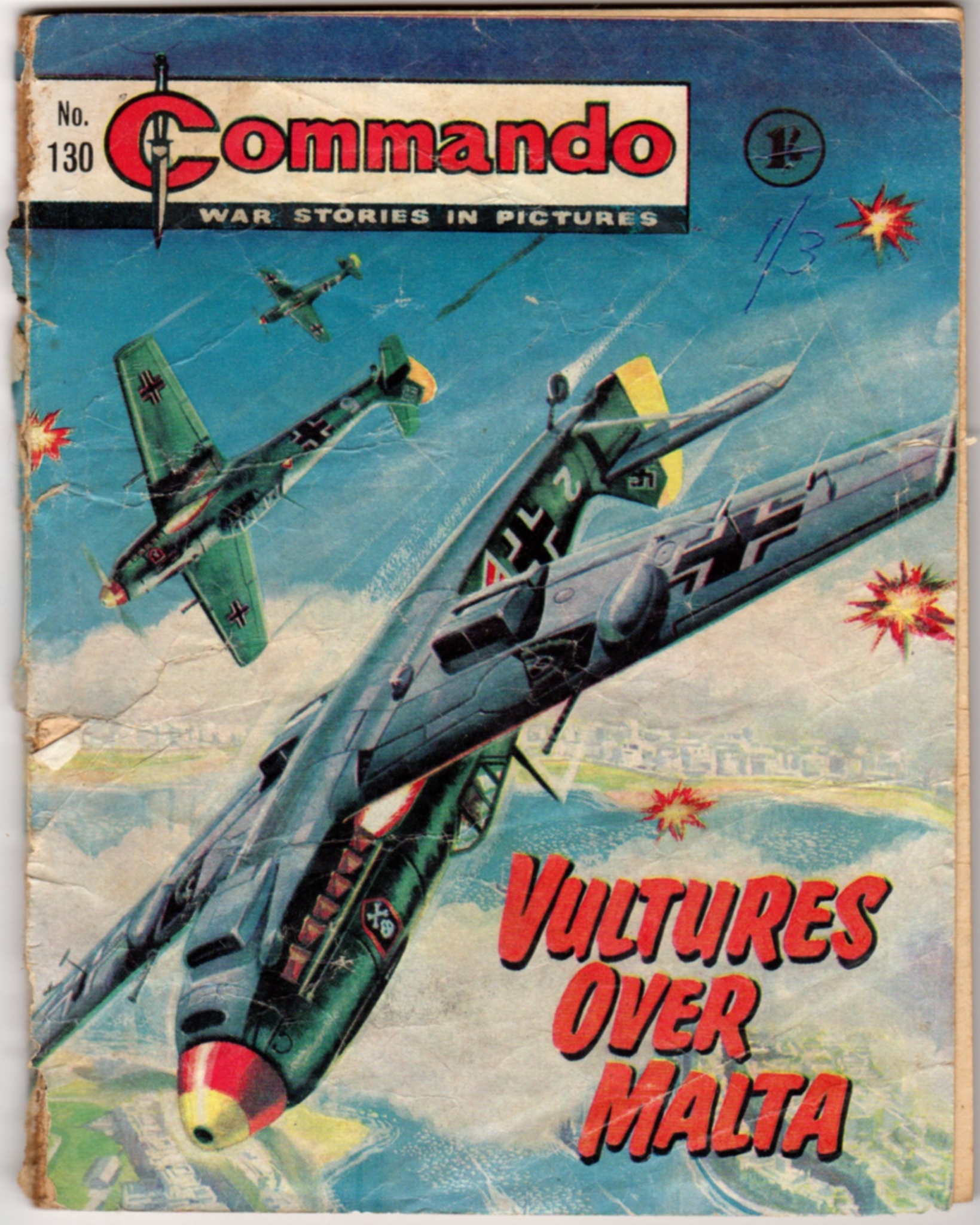
This is a wow page for the western world's first operational supersonic jet bomber.
It could exceed 2,450 km/h or Mach2, carrying nuclear weapons.
It served the Strategic Air Command (SAC) of the United States Air Force, and stood combat ready from 1960-1970,
that is, from the Cuban Missile Crisis until the start of the détente period (разрядка) between the USSR and the USA.
Here's a memory from Chembur OLPS school days.
It was academic year 1967-68 -- the Koyna earthquake year.
My classmates and I were under 10 years old and in 5th standard.
Dorab Daruwalla, dear late Gurucharan Tonse and I were crazy about aircraft.
We were also crazy about Commando comics -- Commando War Stories in Pictures.

That was when and where we learned about Supermarine Spitfires and Messerschmitt ME-109 Bfs and Heinkel He-111s and Junkers Ju-87 Stukas.
The Me 109 Bf had a cannon that fired through the propeller hub spinner.
We sketched a lot of world-war-two dogfights and built a lot of scale models.
Both Dorab and I were uncommonly good at sketching; Dorab was actually a shade better!
The 1965 war was fresh in mind and we even pencil-sketched imagined dogfights between Indian Air Force Gnats and Pakistani Air Force Sabres.
One aircraft that stuck in mind was made by Convair (Consolidated and Vultee aircraft corp.), a manufacturer that has since the mid-1990s flown off into the smoky skies of oblivion.
It was the Convair B-58 Hustler -- the western world' first delta-winged supersonic intercontinental nuclear bomber.
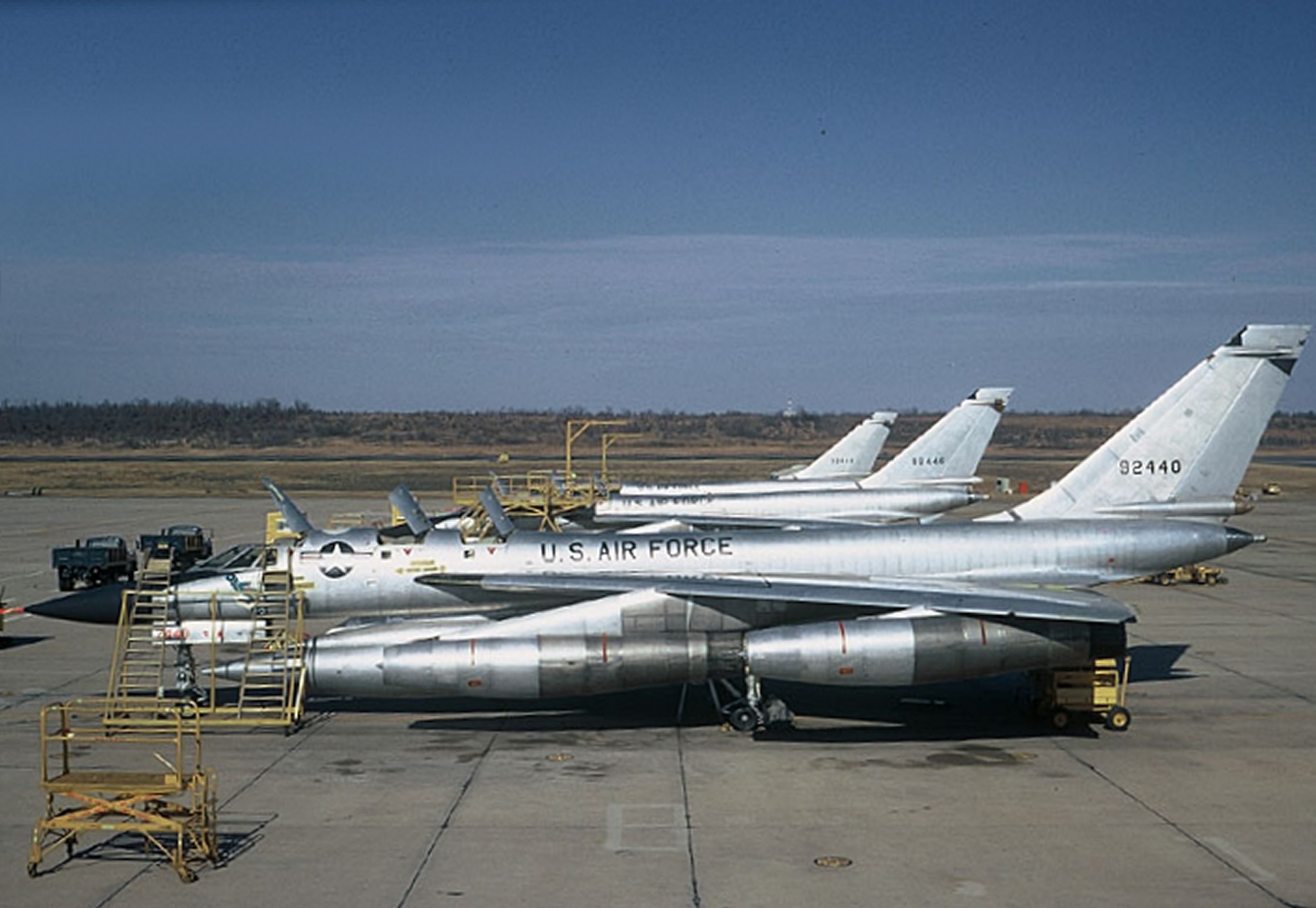
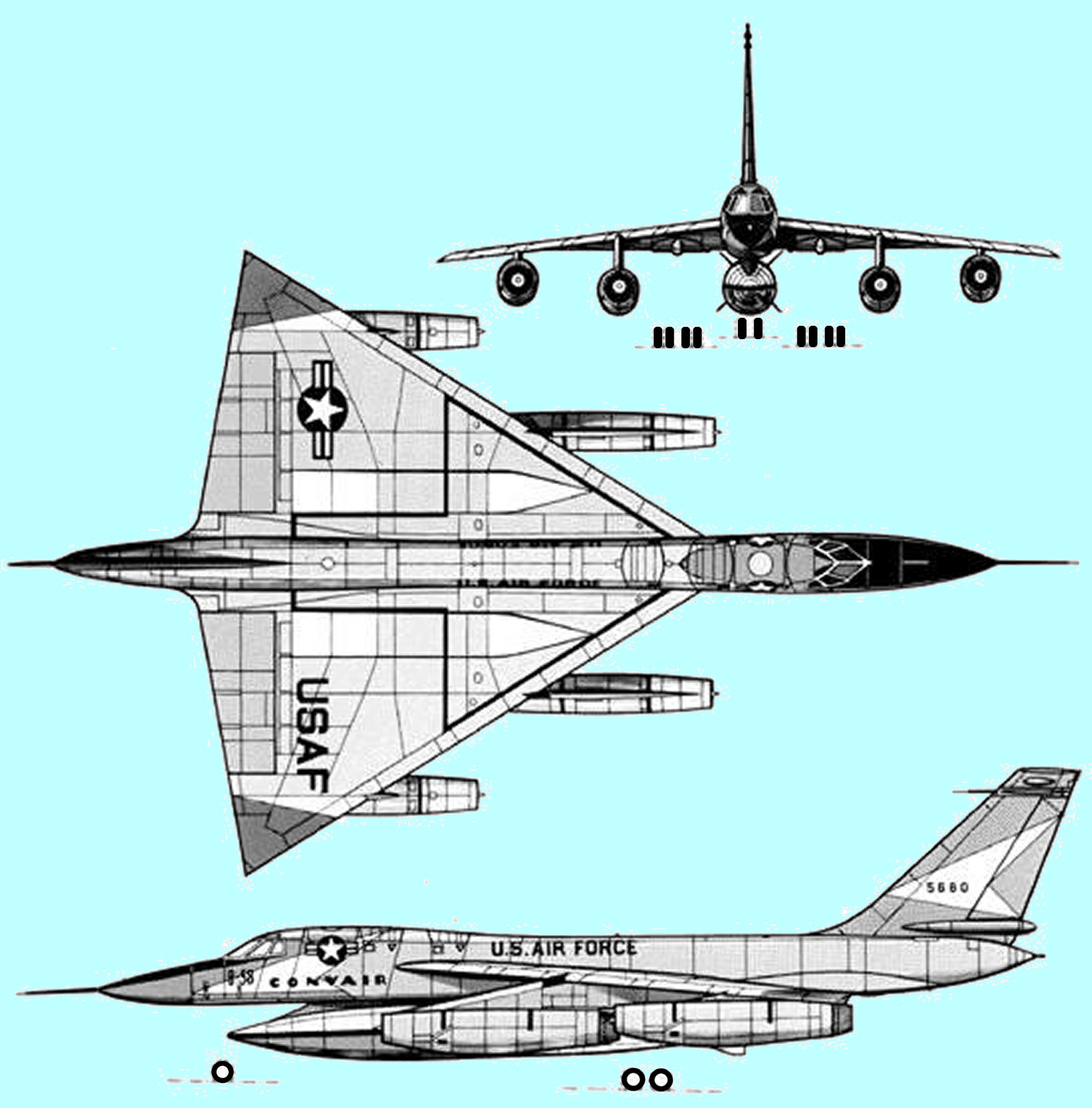
Why did the Hustler stick in mind ?
He shared the printed instructions of his Revell 1:94 scale plastic model kit in our group.
We all went ga-ga over the kit-building instruction manual and tried to read up, as much as possible about the aeroplane from the British Council and American libraries.
It looked like a needle-nose rocket ship with delta wings and four underwing turbojets -- strikingly different in appearance. Fastest bomber in the history of US SAC.
The Revell plastic model kit had a pilot, navigator-bombardier, defensive systems officer and three openable cockpit hatches, rotating wheels and highly detailed gear struts/braces.
The kit also featured a detailed cockpit showing the B-58’s unique pilot ejection escape pod,
an optional standard fuel/weapons pod or extra capacity fuel/weapons pod,
four nuclear bombs and authentic insignia decals.
The B-58's nose landing gear had a pair of cockpit steered wheels attached to a rather complex strut.
During extension/retraction, the nose gear had to clear the prominent nose of the ventral fuel+bomb pod carried externally under the fuselage.
This made the strut design complex.
The strut was hinged so that the main strut rotated up and back into the well while clearing the fuel+bomb pod (see animation).
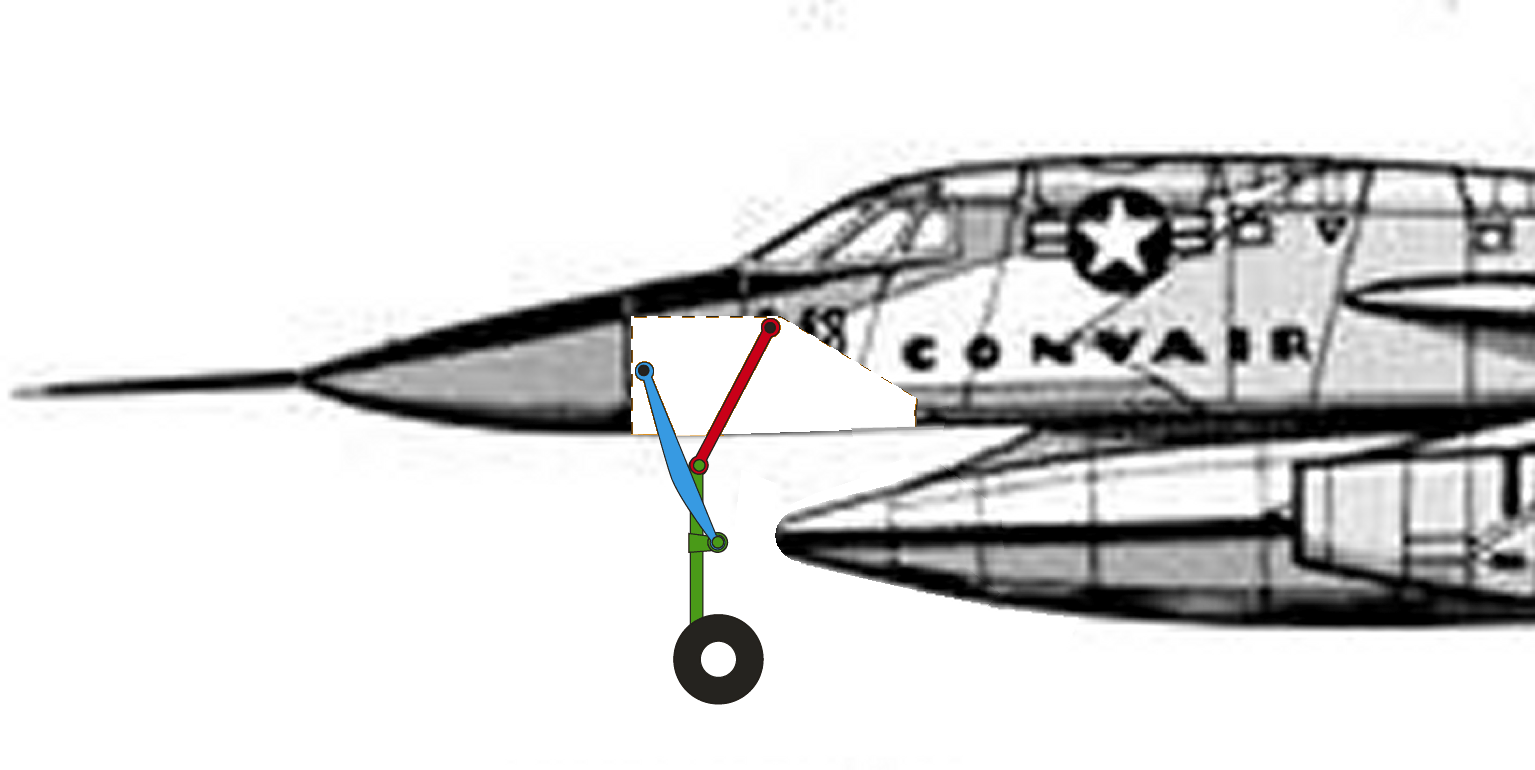
The ventral fuel+bomb pod, could be one of three types:
From 1961 to 1963 it was retrofitted with two tandem stub pylons under each wing, inboard of the engine pod, for B43 or B61 nuclear weapons for a total of nuclear weapons per airplane.
The TCP fuel/weapons pod was hung under the aircraft fuselage and had a diameter, almost as fat the fuselage.
The powerplants were four General Electric J79-GE-1 afterburning turbojets of 15,600 lbs. thrust each (with afterburner).
The GE J79 was a military, axial flow, single-spool turbojet with a 17-stage compressor.
It had a novel arrangement of variable stator blades which let the engine develop twin-spool-like pressure at much lower weight.
Each blade was made largely of stainless steel. It cost several thousand dollars per blade, to replace !
The compressor blades were mounted on disks and spaced with corrosion-resistant steel spacers.
The first seven stages were made of titanium.
The four General Electric J79-5 turbojet engines, consumed fuel in prodigious quantities, particularly at supersonic velocities.
Each produced 10,000 pounds of military thrust and 15,600 pounds of max afterburn thrust at sea level. These were revolutionary figures for those times.
Each J79 featured a hydraulically actuated inlet spike that extended or retracted to match airflow velocity, keeping the conical shock wave outside the engine inlet during supersonic flight.
Were the shock wave to enter the engine inlet, it could starve the engine of air and flame it out.
Internally, the engine had variable position stator vanes in the first six stages of the compressor.
Stator vanes help reduce air turbulence inside the compressor.
The variable stator vanes adjusted in pitch automatically as a function of engine speed and compressor inlet temperature, minimizing the possibility of compressor stall.
At low speeds, the air flow inside the engines tends to be insufficient for combustion, so the stator vanes will open to allow more air to support combustion.
At cruise speeds, too rapid an airflow can cause flameout, so must be restricted.
An adjustable exhaust nozzle had slatted vanes that opened and closed, depending on throttle,
to give the most efficient thrust and specific fuel consumption.
The B-58 Hustler was the first operational jet bomber capable of sustained Mach 2+ supersonic flight. Some of its speed records still stand today.
It was originally intended to fly at high altitudes and high speeds to avoid Soviet fighters.
Operational from 1960-1970, its sonic boom, was often heard by the public as it passed overhead in supersonic flight.
However the Soviets innovated highly accurate SAMs forcing the B-58 into a low-level penetration role that severely limited its range and strategic value.
Combat-ready B-58s set more records than any military aircraft in the world.
They won the Thompson, Bleriot, Mackay, Bendix and Harmon aero trophies and set 14 world speed records in international competition.
On 15th Dec 1959, a Hustler flew 1,680 miles in 80 minutes. That's 21 miles per minute!.
On 18th Sep 1962, a B-58 carried a five-ton payload to 85,360 feet above sea level.
Many of the Hustler's records are still unbroken in 2013.
When the supersonic B-58 Hustler entered service in 1961, its three crew members had individual ejection seats.
However, ejection at speeds above 665 mph was extremely hazardous.
The windblast at Mach 2 can tear off a crew member's helmet send his arms and legs flailing helplessly.
Above 40,000 ft asl, air pressure is too low to support life. Ambient temperatures are close to -50°C.
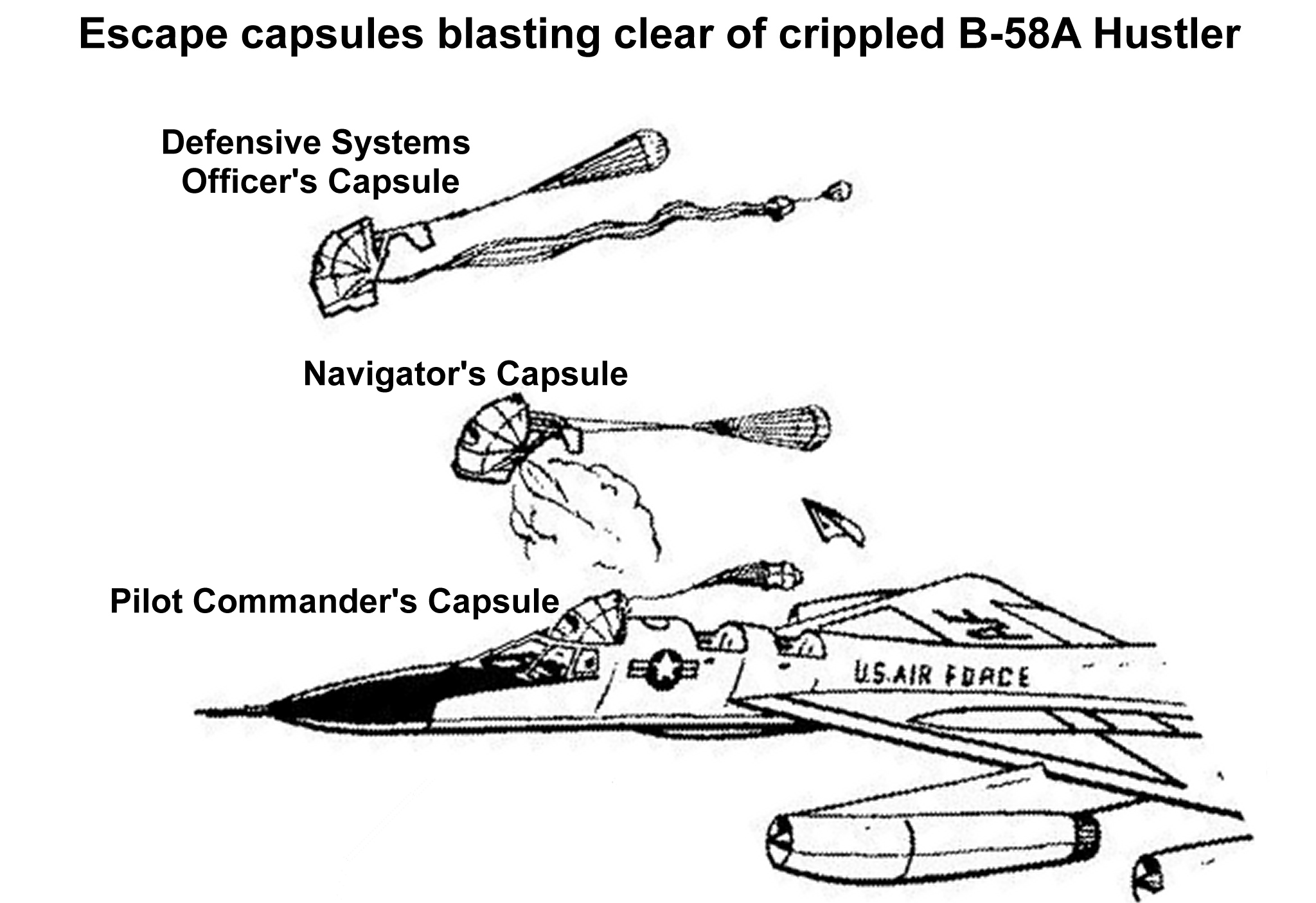
Stanley Aviation of Aurora, CO innovated a solution that would allow safe ejection at supersonic speed -- a high-speed high-altitude folding egg-shell-like capsule ejection system.
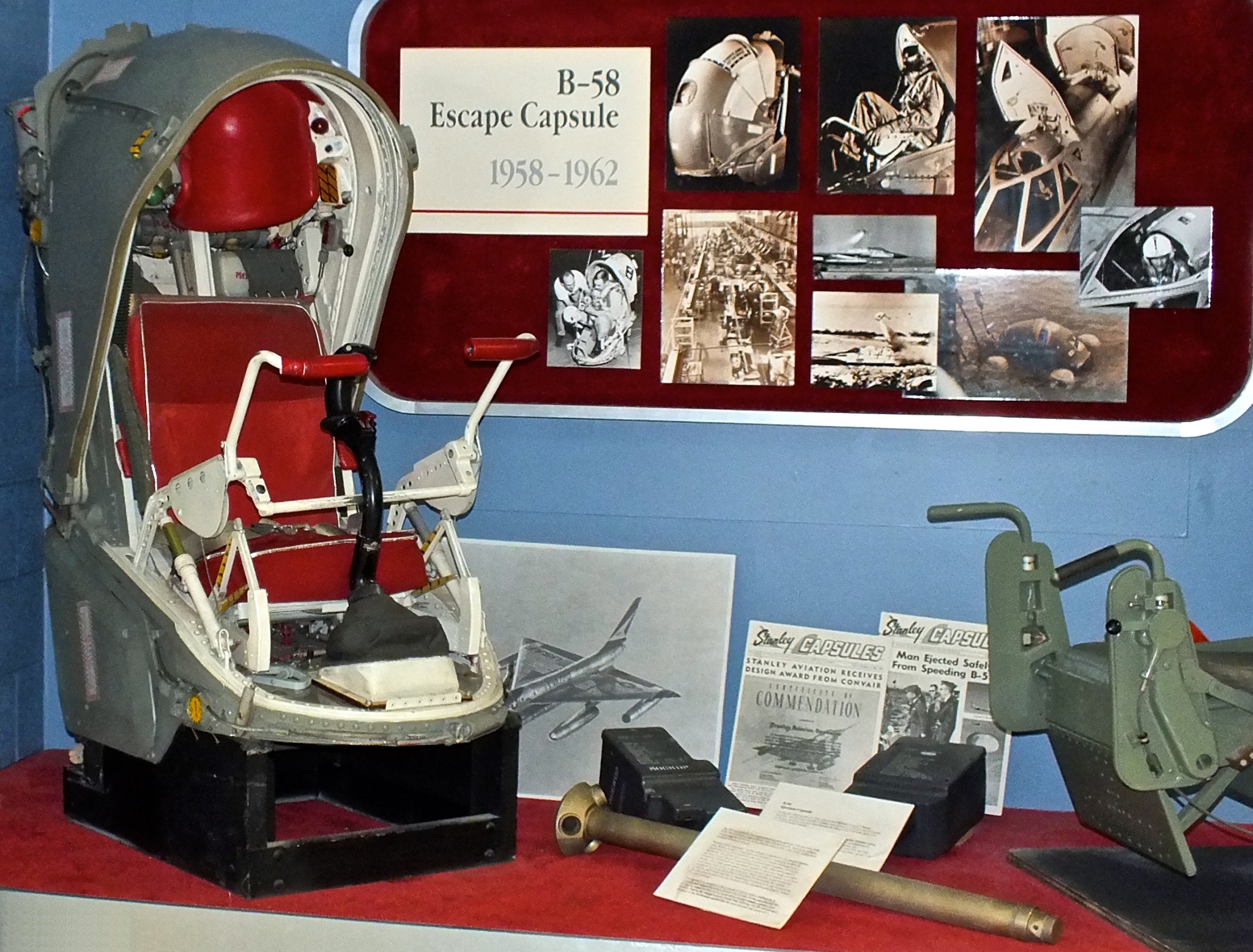
The capsule was adopted for retrofit beginning in late 1962, making the B-58 the first USAF aircraft with a capsule ejection system.
It could be used throughout the flight envelope up to 70,000 feet and Mach 2.
The capsule has airtight clam shell doors and independent pressurization and oxygen supply.
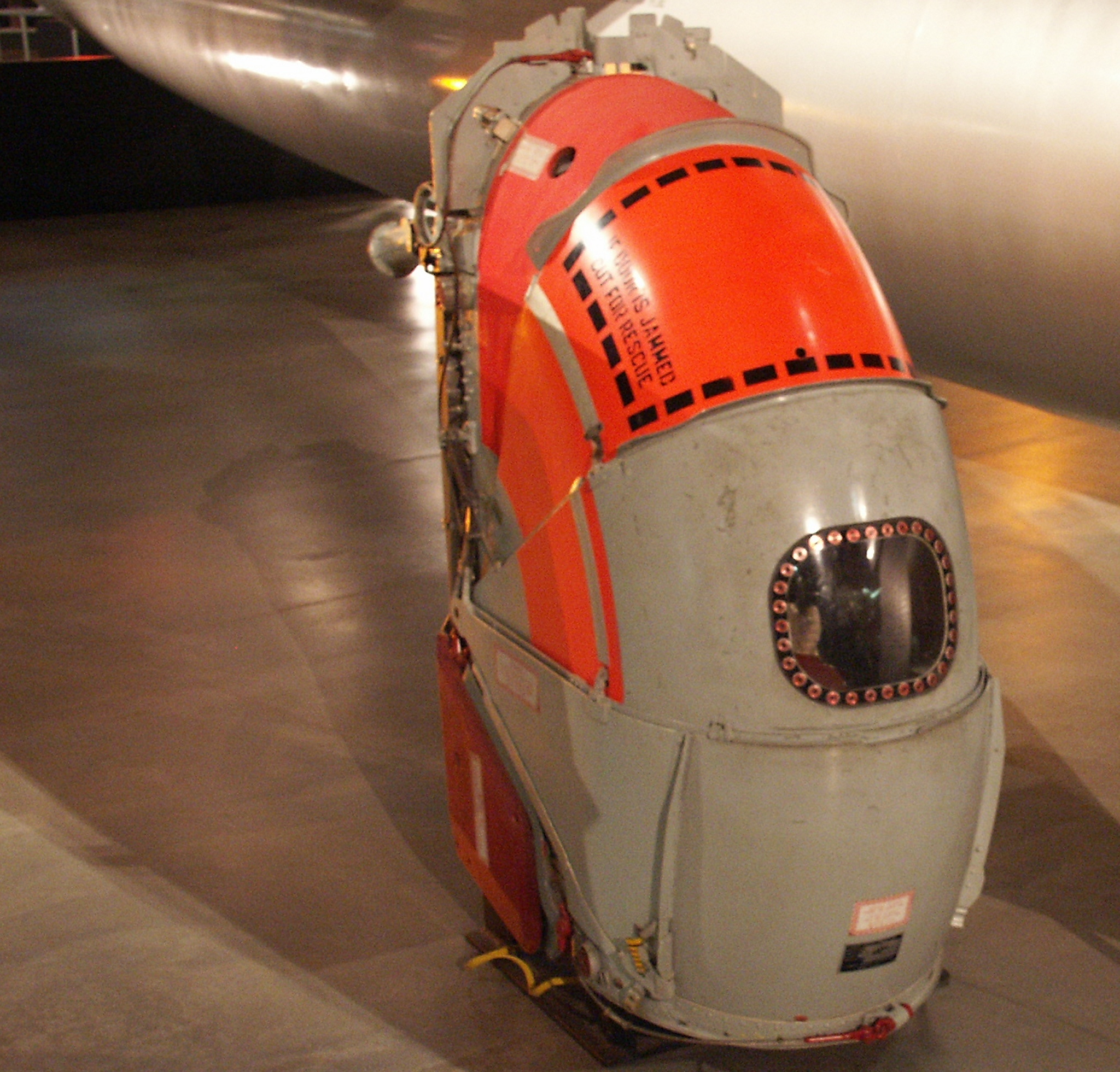
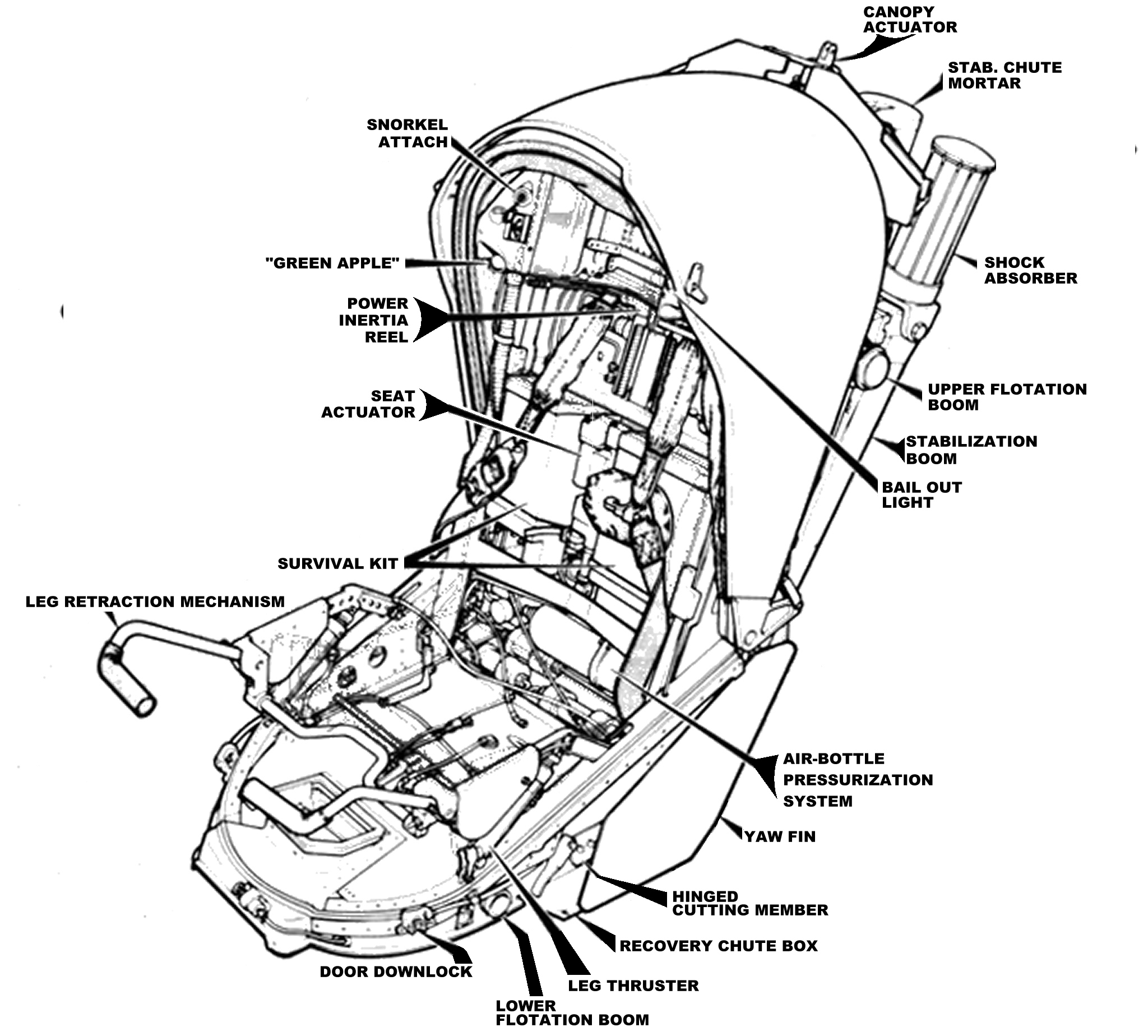
The pilot's capsule contained a control stick and other controls necessary to fly the aircraft while encapsulated.
It had a transparent window large enough to let him see most of the forward instrument panel.
To choose to bail out, the crew member could squeeze ejection trigger handles.
The overhead canopy would separate from the plane. The rocket-fired upward blasted capsule followed quickly.
A drogue stabilizing parachute oriented the system properly. On descent, the main parachute deployed automatically at appropriate altitude.
Shock absorbers, absorbed most of the landing impact shock. Having the crewman on his back in normal landing attitude distributed the remaining shock.
The capsule could float on water and had additional flotation cells to manually inflate to turn it into a life raft.
The top and bottom skins were 1 mm thick duralumin alloy;
the filling was half-inch-thick and made of tiny honeycombs of phenolic resin-fiberglass cloth, or, in some areas very light gauge duralumin.
The core was bonded to the duralumin outer layers with phenolic adhesives and cured at 175 psi at 177° C for two hours.
The absolute cleanliness essential for solid bonding, earned the fabrication department of Convair, the name: hospital section.
The result was ultra-stiff, strong, ultra-light, replaceable skin, with good thermal-insulating qualities.
Thermal insulation was essential. At a speed of Mach 2, external skin temperatures exceeded 121° C!
The few areas which saw high temperature, such as the aft portions of turbojet nacelles and the elevons which dipped into the inboard jet blasts, had panels of brazed stainless steel sandwich instead of duralumin and fiberglass.
The entire interior of the wing and fuselage aft of the crew compartment, were filled with JP-4 fuel.
When fully serviced, the Hustler carried in its body over 46 tons of JP-4 fuel. That is over 57% of its gross weight of 80.4 tons.
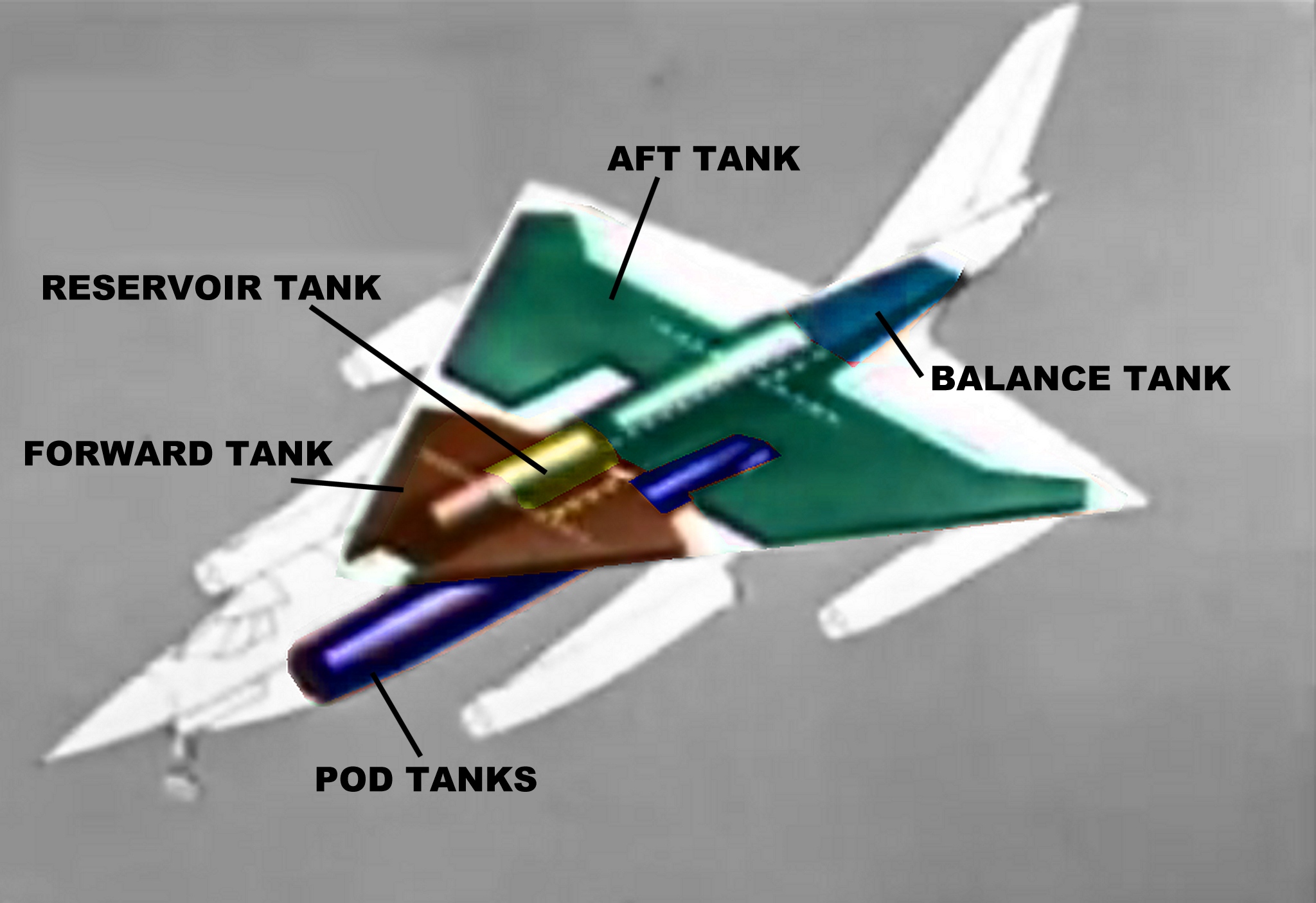
Early in its life, the B-58 acquired a reputation for being dangerous. Of 116 aircraft built, 26 were destroyed of which 11 were due to human error.
Only eight Hustlers out of 116 made, survive.
#4 55-663 Aug 1957 Convair B-58A Hustler.
Converted to TB-58A and served with 305th Bomber Wing. Initially painted in red/white/aluminium livery.
On static display at
Grissom Air Force Base, IN.
#6 55-665 Sep 1957 Convair YB/RB-58 Hustler "Snoopy"
Currently static derelict on the Edwards Air Force Base, photo test range.
#7 55-666 Mar 1958 Convair YB/RB-58 Hustler
Currently on static display at
Chanute Air Force Base, Rantoul, IL wearing serial number 61-2059.
#9 55-668 May 1958 Convair TB-58 Hustler "Wild Child II/Peeping Tom"
Currently located in the air park at
Little Rock AFB, Jacksonville, AR, 10 mi. NE of Little Rock.
Can be seen during Base open house when traffic is routed past the airpark when exiting from the event.
#40 59-2437 40 B-58A "Firefly II/ Rigley's Baby"
On display at
Kelly Air Force Base, TX.
#61 59-2458 61 B-58A Cowtown Hustler
On display at the USAF Museum at Wright-Patterson Air Force Base, Dayton, Ohio.
#95 61-2059 Convair B-58A Hustler "Can Do/Greased Lightning"
Placed on static display at the Strategic Aerospace Museum, Offut Air Force Base, Bellevue, Nebraska.
#116 61-2080 Oct 1962 Convair B-58A Hustler
Placed on static display at Pima Co. Aerospace Museum, Tucson, Arizona.